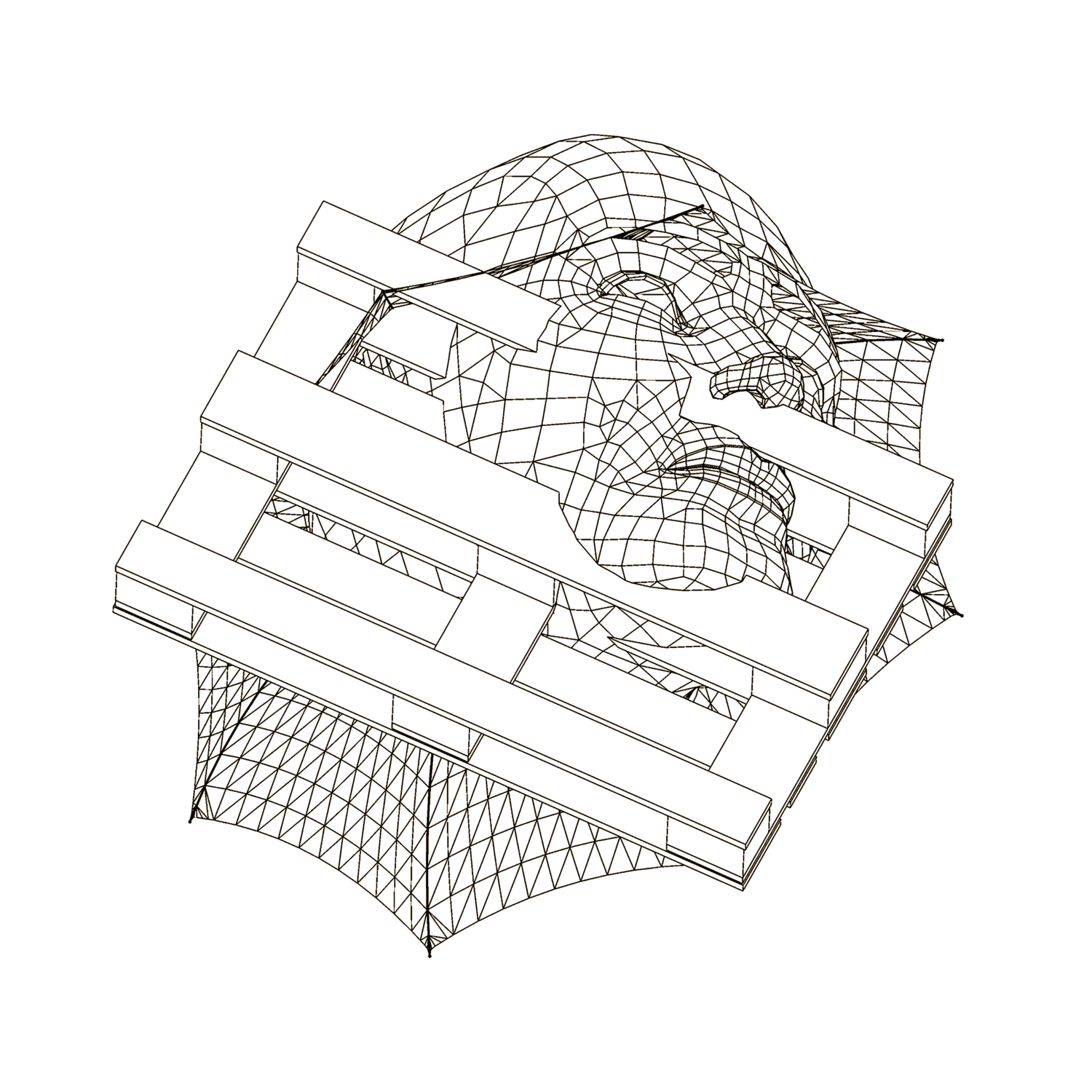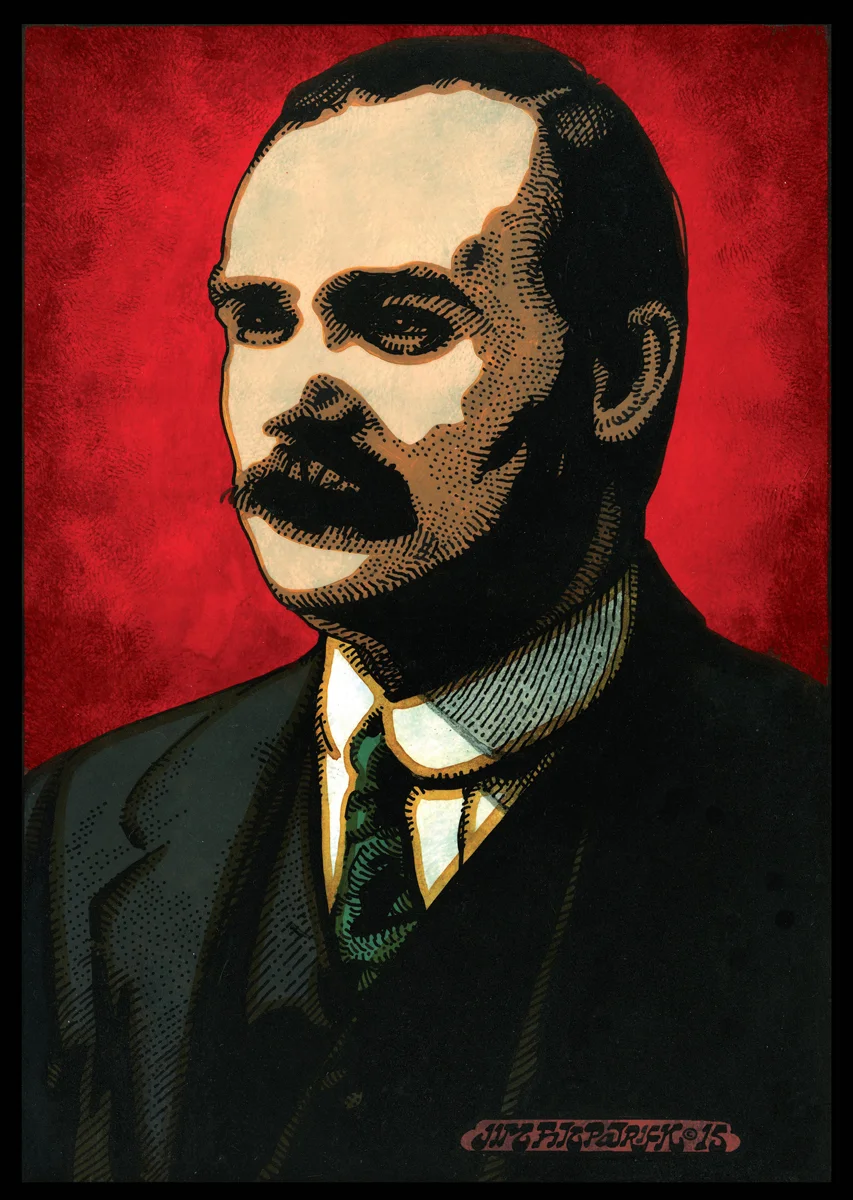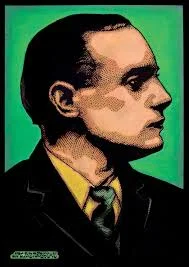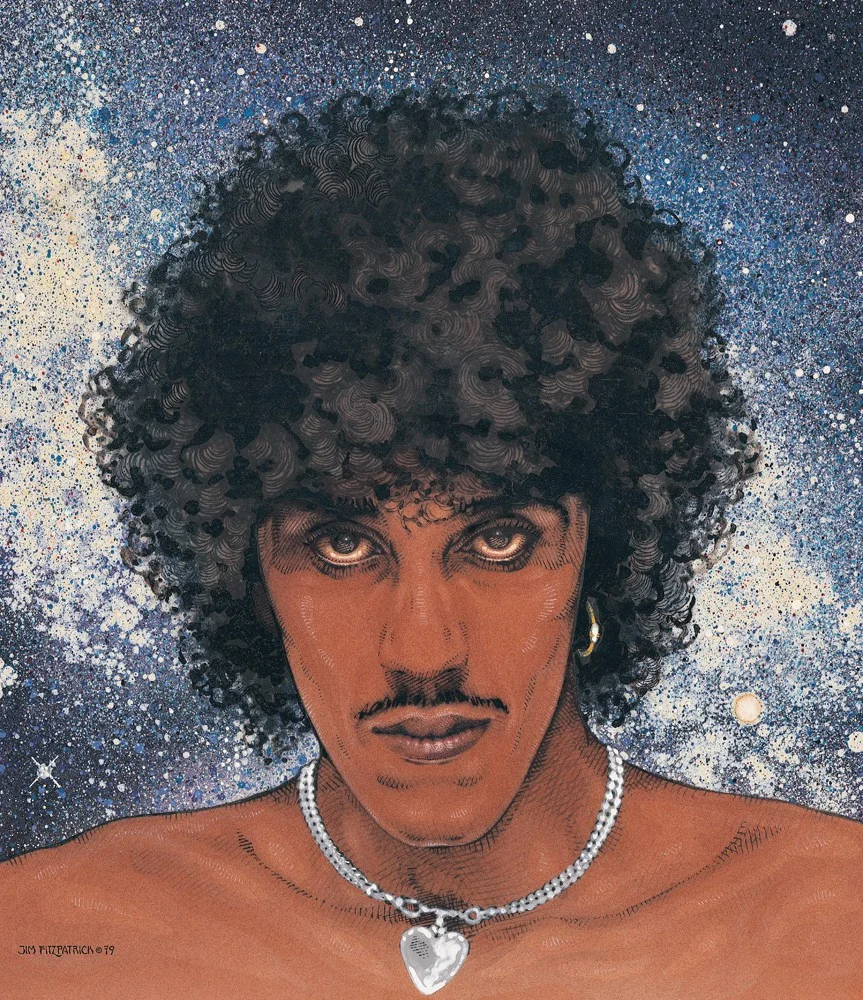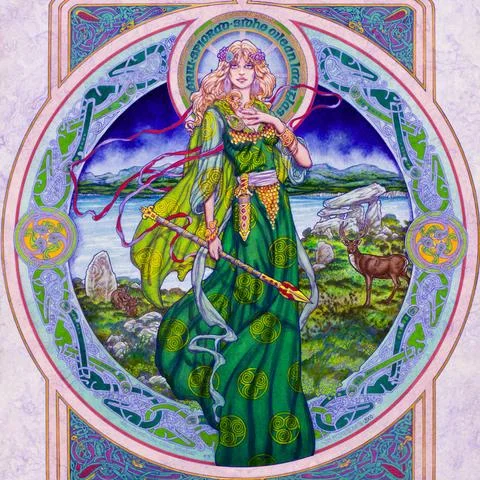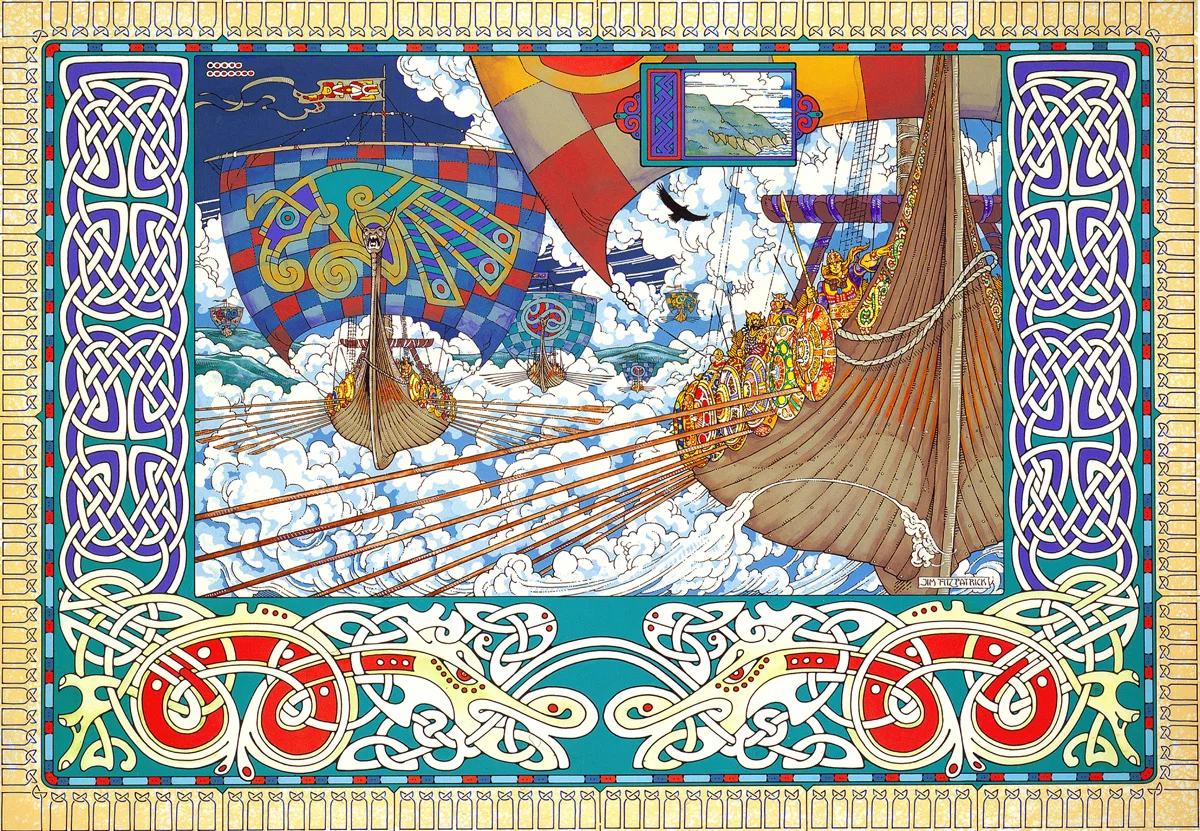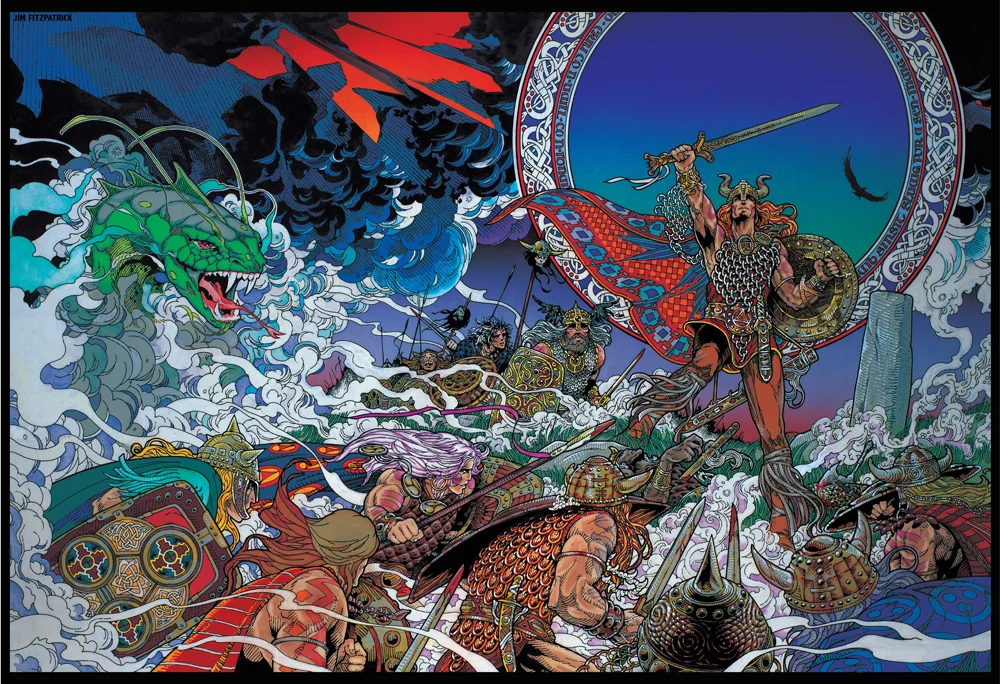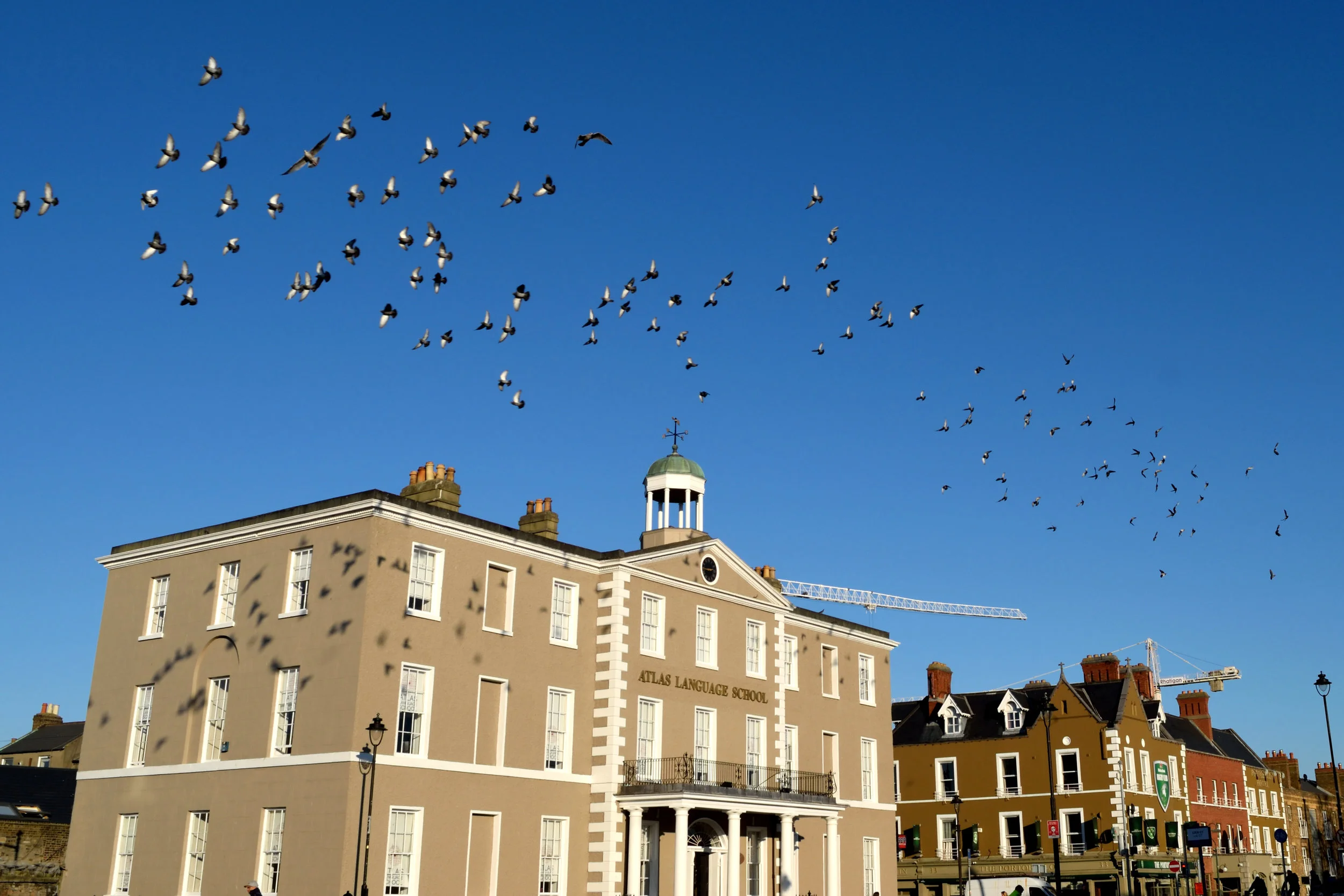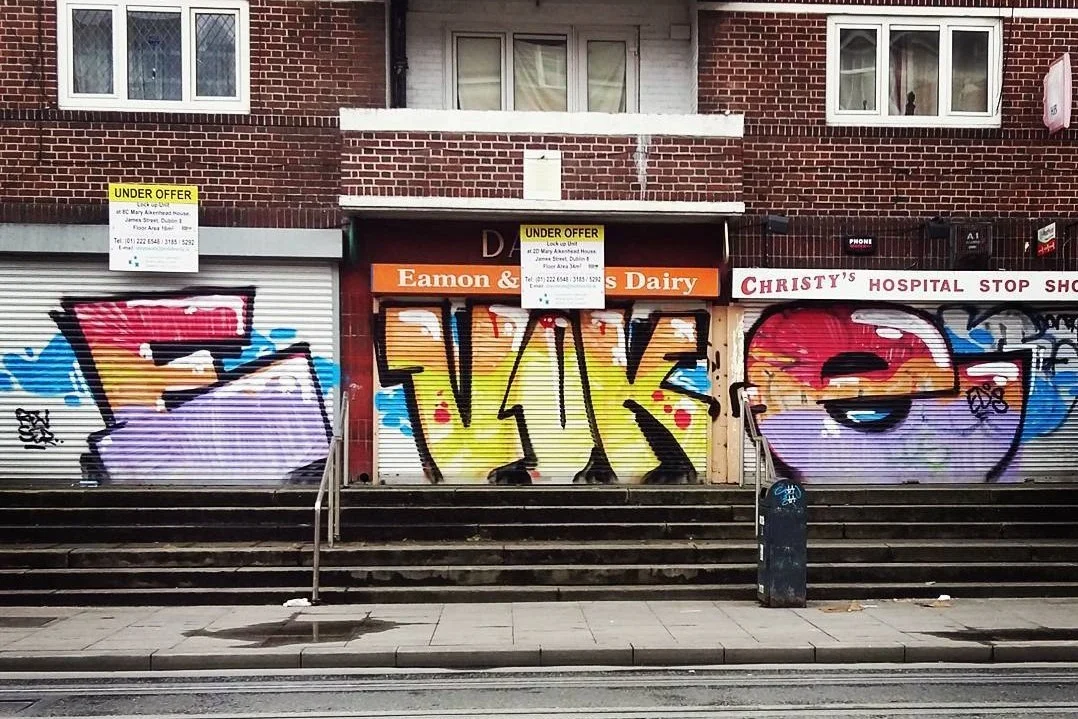Celtic, Iconic, Historic - Jim FitzPatrick
Jim FitzPatrick, an artist embedded in the cultural history of Ireland.
The iconic two-tone poster of Che
What do a South American Marxist revolutionary, a poem by W.B. Yeats and Padraig Pearse have in common? One thread that links these characters is they each feature as as subject in the works of Celtic artist Jim Fitzpatrick. He made the world famous two-tone print of Che Guevara’s image. He designed all of Thin Lizzy’s album covers, including The Black Rose, which appears in Yeats’ poetry. He produced fantastic portraits of the leaders of the 1916 Rising. That’s some seriously diverse and important artistic creation.
Jim Fitzpatrick was born in Dublin in 1946. Due to poor health as a child, he spent much of his youth bed ridden or in the country with his relatives. This allowed him to spend hours reading and drawing, becoming obsessed with the tales and imagery of Celtic myths such as the Tuatha De Danann and Cú Chulainn. His passion for these stories stays with him till this day. His father was a photo-journalist and his grandfather was a political cartoonist. Art and politics were in his blood.
So, how does an artist with a fascination of Irish mythical figures end up creating one of the most iconic images in human history? The answer seems to be a combination of genuine talent, a righteous political ideology, and a splash of luck. Jim Fitzpatrick, aged 16, met Che Guevara in a pub in Kilkee in 1962. Guevara was visiting the country to trace his Irish roots, and Fitzpatrick was working there for as a summer job. Guevara strolled with two mates and ordered a double whiskey off Fitzpatrick. They struck a fateful conversation, chatting about Guevara’s trip and his political ideology. This chat eventually lead to Fitzpatrick making his classic print, inspired by a photo of Guevara, taken by a photographer named Alberto Korda. This image eventually became immortalised in the global consciousness.
Che Guevara died in 1967 while attempting to instigate a coup in Bolivia. He remains a divisive figure. Some see him as a hero, a revolutionary who stood against injustice and sacrificed himself for the greater good. Others think he’s a vicious mass murderer. The truth is likely somewhere in the middle. An inspirational leader no doubt, who stood against many of the most dangerous forces of his time, but certainly not a man without a taste for violence.
By the time Guevara had passed, Fitzpatrick was a left-wing political activist. He wanted to ensure his idol Guevara was not forgotten by the world, so he created the famous poster and distributed it via his connection to various left-wing groups around the globe. There is no better word than iconic to describe this image. It is one those phenomenal symbols that transcends the usual cultural limits. Like the Beatles, or the Nike swoosh, or even a cannabis leaf, it has become bigger than itself. It originally represented a memory of a man who stood for a specific political philosophy, but that meaning has faded. I think it now stands for a middle finger in the face of authority, a belief in the dignity and power of the common people.
The Black Rose artwork Jim FitzPatrick made for Thin Lizzy
Back in the day, Fitzpatrick never made a copyright claim on the poster - hippie lefties tend not bother with that malarkey - and therefore never got a cent from the millions that were undoubtedly made from its popularity. Recently, he has attempted to settle the copyright dispute and dedicate the royalites to the Cuban healthcare system so the people of Cuba and their fantastc doctors can benefit from the commercial success of the poster. Trust FitzPatrick to make sure his achievements go some way towards promoting a bit of socialism.
Our Celtic artist didn't only spend his time honoring guerrilla fighters. He also hung out with rockstars. Himself and Phil Lynott were friends, they met while socialising in Ireland’s beat culture, which included characters like the great poet Brendan Behan. Fitzpatrick ended up producing the artwork for all Thin Lizzy’s albums. Perhaps his most famous is The Black Rose, a symbol of Ireland's dark beauty.
In a sense this image represents our past as the shadowy and neglected island to the west of England, at a time when even direct reference to Ireland was prohibited. W.B. Yeats used the image of the rose in his poetry often, with one noted example being the poem The Rose Tree. Here's a little verse for you:
THE ROSE TREE
“…… ‘But where can we draw water,’
Said Pearse to Connolly,
“When all the wells are parched away?
O plain as plain can be
There’s nothing but our own red blood
Can make a right Rose Tree.'”
Other notable work by Fitzpatrick include his intricate drawings of Irish mythology, including The Book of Conquest and The Silver Arm, painstakingly illustrated books telling a Christian influenced tales about the history of Ireland. Some pages from these impressive works are included in the gallery at the end of the article. I particularly enjoy his drawings of the heroes of 1916, like the ones below of James Connolly, Padraig Pearse, and Countess Markievicz. The drawings place a layer of colour and texture over the original portraits of these iconic figures, giving their faces a new energy and vitality.
Fitzpatrick has a talent for capturing the essence of a person in simple imagery. This is of course demonstrated best in his creation of a piece of genuine pop culture, the print of Che. This is a stunning achievement, especially since it’s an image which stands for cultural revolución!
The works of Jim Fitzpatrick intricately interweave powerful Irish symbolism, connecting the our love of beauty and stories with our revolutionary spirit. He is truly a Celtic artist, from who I think we can take guidance and direction as we try to understand what it means to be Irish in this modern world.
To me, FitzPatrick represents a respect for love and beauty, for myths and storytelling, and a fondness for the rebellious spirit which stands up to oppression. I see this as fitting for Ireland’s current situation. Many challenges await, and we must be soldiers of culture, willing to fight a battle of ideas, ready to use the pen, the mic, the camera and the brush to create a future we all want to share.
Conall Heussaff
27th February 2018
Sources and further reading:
